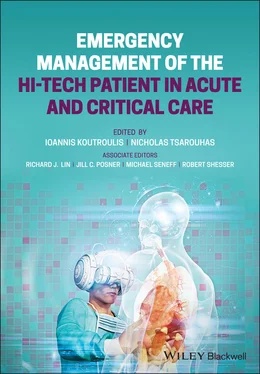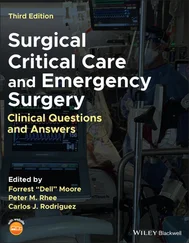PRBC = packed red blood cells
LAGB is the least complicated surgical procedure, but has not taken hold as a major bariatric surgery option because of the frequent band complications, and the significant segment of patients who do not achieve the weight loss results desired with this procedure. LAGB is considered reversible, though, after the band is removed, a significant amount of scar tissue will remain, complicating further surgical procedures. While the lap band is associated with fewer severe surgical complications such as leak and significant bleeding, the complication rate itself is higher. Complications include reflux symptoms, food intolerance, esophageal dilation, band slippage, gastric prolapse above the band, and erosion of the band, among others.
Gastric slippage, which occurs in 15–20% of LAGB patients, occurs when a part of the stomach becomes prolapsed above the gastric band and creates an unnecessarily large gastric pouch and potential obstruction. Patients will develop reflux symptoms and dysphagia and, in severe cases, can develop significant abdominal pain and vomiting. Abdominal upright radiographs or a UGI study will likely show the gastric slippage and dilation of the proximal gastric pouch. Even those patients who appear clinically well typically require surgery to correct the gastric slippage and should be aggressively fluid resuscitated and have electrolytes checked and corrected prior to surgery. Surgeons may attempt to deflate the gastric band by advancing a Huber needle into the port site at the skin until the needle hits the plate at the back of the port, and then withdrawing fluid to deflate the band completely. This should allow the stomach to return to its normal size and obviate the need for immediate surgery until a bariatric surgeon can evaluate the band. Nonsurgical practitioners are typically advised not to deflate the band themselves, though in EDs, where there is no timely access to a general or bariatric surgeon, ED physicians may do so.
Gastric band patients may also develop erosion of the band into the stomach. Band erosion may present subtly, with few abdominal complaints. Oftentimes, the presenting feature will be an infection at the band port site and can occur months or even years after the initial band placement. All patients with a port infection thus require evaluation for band erosion. Band erosion will require UGI or endoscopy to diagnose and will then require band removal. This is typically done surgically but endoscopic retrieval has been reported.
Finally, gastric band patients may also develop gastric necrosis. Gastric necrosis is typically a late complication of lap LAGB that occurs from a combination of pressure from the band and gastric prolapse. Patients will present acutely ill, with a surgical abdomen. UGI or abdominal CT studies demonstrate the gastric prolapse.
Though unlikely to cause someone to present to the ED, after LAGB, patients will sometimes present with weight gain, as the band is no longer functioning to restrict food intake or if patients themselves develop maladaptive eating strategies (ingesting high‐calorie liquids such as ice cream or milkshakes or foods that can easily pass through the small stoma, e.g. potato chips).
1 1 Alqahtani, A., Alamri, H., Elahmedi, M., and Mohammed, R. (2012). Laparoscopic sleeve gastrectomy in adult and pediatric obese patients: a comparative study. Surg. Endosc. 26 (11): 3094–3100.
2 2 Alqahtani, A.R., Antonisamy, B., Alamri, H. et al. (2012). Laparoscopic sleeve gastrectomy in 108 obese children and adolescents aged 5 to 21 years. Ann. Surg. 256: 266–273.
3 3 American Society for Metabolic and Bariatric Surgeries [Internet]. Estimate of bariatric surgery numbers, 2011‐2015. [cited Feb 14 2017]. Available from https://asmbs.org/resources/estimate‐of‐bariatric‐surgery‐numbers
4 4 Ellison, S.R. and Ellison, D.S. (2008). Bariatric surgery: a review of the available procedures and complications for the emergency physician. J. Emerg. Med. 34 (1): 21–32.
5 5 Hamdan, K., Somers, S., and Chand, M. (2011). Management of late postoperative complications of bariatric surgery. Br. J. Surg. 98: 1345–1355. doi:10.1002/bjs.7568.
6 6 Hsia, D.S., Fallon, S.C., and Brandt, M.L. (2012). Adolescent bariatric surgery. Arch. Pediatr. Adolesc. Med. 166 (8): 757–766.
7 7 Huang, C.S. and Farraye, F.A. (2006). Complications following bariatric surgery. Tech. Gastrointest. Endosc. 8: 54–65.
8 8 Inge, T.H., Zeller, M.H., Jenkins, T.M. et al. (2014). Perioperative outcomes of adolescents undergoing bariatric surgery. The Teen‐Longitudinal Assessment of Bariatric Surgery (TEEN‐LABS) study. JAMA Pediatr. 168 (1): 47–53.
9 9 Khwaja, H.A. and Bonanomi, G. (2010). Bariatric surgery: techniques, outcomes and complications. Curr. Anaesth. Crit. Care 21: 31–38.
10 10 Michalsky, M., Recihard, K., Inge, T. et al. (2012). ASMBS pediatric committee best practice guidelines. Surg. Obes. Relat. Dis. 8: 1–7.
11 11 https://www.pennmedicine.org/for‐patients‐and‐visitors/find‐a‐program‐or‐service/bariatric‐surgery/procedures/roux‐en‐y‐gastric‐bypass‐rgb
12 12 https://www.swedish.org/services/adjustable‐gastric‐band
13 13 https://www.uncmedicalcenter.org/uncmc/care‐treatment/bariatric‐surgery/types‐of‐bariatric‐surgery/gastric‐sleeve‐surgery/
4 Transjugular Intrahepatic Portosystemic Shunt
Heather House1,2 and Anne Marie Cahill1,3
1 Perelman School of Medicine at the University of Pennsylvania, Philadelphia, PA, USA
2 Division of Emergency Medicine, Department of Pediatrics, Children’s Hospital of Philadelphia, Philadelphia, PA, USA
3 Division of Interventional Radiology, Department of Radiology, Children’s Hospital of Philadelphia, Philadelphia, PA, USA
The hepatic portal system is a group of vessels that supply nutrient‐rich blood from the gastrointestinal tract to the liver. The hepatic portal vein drains the superior mesenteric vein and the splenic vein, as well as receives blood from the inferior mesenteric, gastric, and cystic veins. Within the liver, the portal vein branches to right and left, dividing further into portal venules. Portal venules and hepatic arterioles empty into hepatic sinusoids where hepatocytes receive nutrients, process toxins, and mix oxygenated blood. After processing, blood is returned to the systemic circulation via the hepatic vein.
Portal hypertension exists when the pressure in the portal venous system of the liver exceeds 10 mmHg. There are myriad causes of portal hypertension, which are broken down to three categories. Presinusoidal causes affect the portal vein and venous system. Portal vein thrombosis may be related to hypercoagulable states, or in neonates, a complication of umbilical central venous access. Direct mass effect or invasion of intrahepatic tumor may cause obstruction. Schistosomiasis causes fibrosis within the portal venules prior to the sinusoids. Other etiologies prior to sinusoids include hepatic fibrosis, congenital extrahepatic portal vein occlusion, arterioportovenous fistulae (Osler–Weber–Rendu syndrome), and hyperdynamic splenomegaly. Etiologies affecting the sinusoids (sinusoidal causes) include cirrhosis, congenital hepatic fibrosis, cystic liver disease, sclerosing cholangitis, and primary biliary cirrhosis. Cirrhosis is the most common cause of portal hypertension and may be related to viral hepatitis or alcoholic cirrhosis. Less commonly, Wilson's disease and hemochromatosis may lead to sinusoidal fibrosis and hypertension. Postsinusoidal obstruction is rare and caused by hepatic outflow obstructions, including Budd–Chiari syndrome, veno‐occlusive disease after bone marrow transplantation, and mass effect.
Читать дальше












